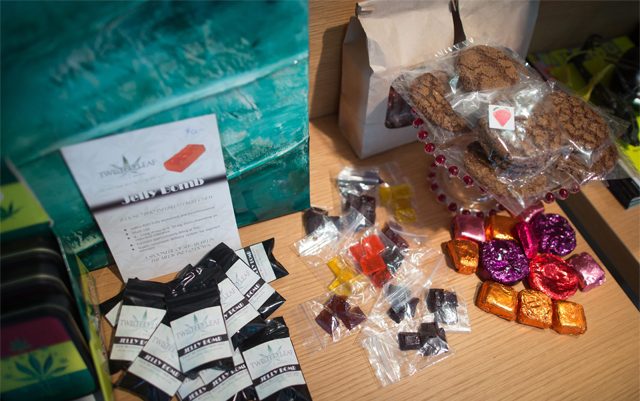A concern that gives prohibitionists one of their main arguments – “what about the children?” – is the potential for children to accidentally ingest their parents’ cannabis infused goodies. Since marijuana edibles often come in the forms of candies and baked goods, such as cookies or brownies, it is easy to see how children could possibly get their hands on (and accidentally eat) the treat before anyone is the wiser.
While there is definitely a need for responsibility on the part of the parents – ensuring the cannabis infused food is stored out of reach of children, in a childproof container and generally not in the vicinity of an unsupervised child at any point – there is only so much a parent can do. In the event that a child does come face to face with a marijuana edible without their parents around (for example, if the parent is with another child, leaving the other unsupervised near the cannabis edible), the states have decided there needs to be clear labeling that tells children not to eat it.
In Colorado, a diamond with the letters THC and an exclamation mark is the new image identifying cannabis infused foods – and that label must be not only on the packaging, but on the food item itself. It appears that Washington is finally catching up; coming to a decision recently to create a label of their own that they believe will ensure that less children end up having to go through the uncomfortable few hours of a THC “overdose”.
“That hard stop hand is good for kids. It lets them know, ‘don’t do it,'” said Jones (Operations Manager of Ponder in Central District). “This part I like. The emergency contact number.”
The new label in Washington will be a bold, red hand held up in a “STOP” gesture, next to it will be the words “Not for Kids” and underneath can be found an emergency contact number set up to help in the event that a child consumes a cannabis product. Ideally, children will see the hand held up in the “no” position and they will understand (whether or not they can read yet) that this is a treat for the grown ups and not for them.
“It’s a growing problem, especially as products becomes more and more available, as it becomes more part of the culture.” said Dr. Anthony Garrard with the Washington Poison Center.
Since the beginning of the year, Washington Poison Center has received at least 115 calls related to marijuana induced emergencies in both children and adults. Some of the call takers at the Poison Center can recall at least one to two cannabis related calls about a child each month. So while the problem is not on a scale as scary as 1-2 children per week, there are still more cases of accidental ingestion than anyone would like to be seeing.
There is a lot of learning to do – especially when it comes to creating edibles in the marijuana industry. We all want a sweet treat that will leave us with that happy high we have come to know and love – however, none of us want to see a child ingest an entire adult dose or more. Take care with your edibles, keep them on high shelves, in locked areas if possible – do your part to keep your children safe so the states don’t have to go further than labeling products to keep them away from kids.







End the federal marijuana prohibition with two clicks!
http://pac.petitions.moveon.org/sign/marijuana-freedom-now-1
I favor full legalization, regulation, and taxation of marijuana, but children are a special problem even when parents are quite attentive. I recall my grandmother, a nurse, warning her adult children of the danger of children overdosing on children’s chewable vitamins. Five of us were subsequently seated at the dining room table where our mother explained in firm, but very, very simple terms that we were never to eat more than one vitamin a day and why. She then put the children’s vitamins in a cabinet that she could not access without standing in a chair. I’m sure she thought there would be no issue in our household. Sibling number four, however, was “that” kid. Although number four had previously resisted taking the vitamin at all, after being instructed not to take more than one per day, this sibling stacked furniture to create a make shift ladder that involved two ladder back chairs and the washing machine which was in our kitchen. That sibling retrieved the vitamin bottle, consumed the entire bottle, strolled into the living room, stood in front of the television and announced what had been done. I still remember my mother’s desperate exasperation and my grandmother’s cold fury as she administered first aid. It seems silly, but child-proof containers might be called for – not that they would have stopped number four!
For some children, a firm no will leave them with the impression that they should not do something for the rest of their lives.
For most children, and adults for that matter, telling them no will only make them believe they should do it (if only to spite the naysayer), as they are precious snowflakes of super-intelligence (and if they weren’t, how could they have so many trophies for participation?).
When it comes down to prevention, it is up to the parents – not the state -, to stop children from consuming what they should not consume.